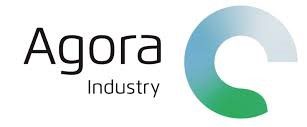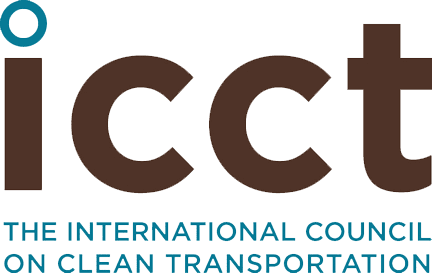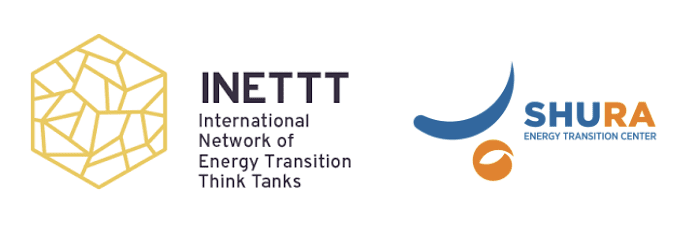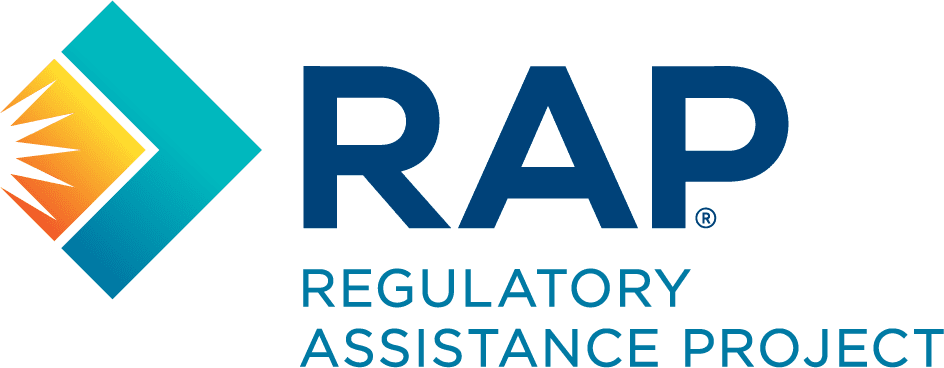New “About the Crux Alliance” video!
Over the past six months, the Crux Secretariat filmed a new About the Crux Alliance video featuring representatives of the Alliance from around the world. In it, the experts explain why the Crux strategy is vital to achieving the emissions reductions necessary to solve climate change. We are delighted to be able to share it with you now. Help us spread the word by sharing it with your own networks!
Industry

New report: Electric heat can slash industry’s fossil fuel use and boost competitiveness
Generating the amount of heat required to melt glass, produce food, and forge steel, among other industrial processes, makes up three quarters of the EU’s industrial greenhouse gas emissions. Addressing these emissions is thus crucial for Europe to meet its climate targets while retaining its global competitiveness. A new report by Agora Industry examines the potential to replace fossil fuel for industrial heat with electric heating technologies. The report, produced together with Germany’s Fraunhofer Institute and Energy Innovation, found that there is already significant potential to cut fossil fuel use–and GHG emissions–using technologies that are available now or will be in the near future. Fast-forward to 2035 and technologies such as heat pumps, electric arc furnaces, plasma torches, and shock-wave heating could meet 90 percent of the energy demand not yet electrified by European industry. But, achieving this will require a targeted plan to address the barriers to direct electrification, ensuring it becomes a key transition strategy for industry across Europe. Agora Industry will continue to help the EU and other major industrial emitting countries craft the policies that can realize electrification potential.
Vehicles & Fuel

Who is leading the transition to electric vehicles?
On May 30, the International Council on Clean Transportation (ICCT) released its second annual assessment of automakers’ progress transitioning to zero-emission vehicles (ZEVs). The transition to clean vehicles continues to accelerate, reflected in growing sales, improved technology performance, and more ambitious visions. The ICCT analyzed 21 of the world’s largest automakers across 10 metrics in three categories. Together, these metrics reflect the readiness to produce ZEVs on a timeline swift enough to keep up with the global transition. Most automakers improved across six of these key metrics: ZEV-equivalent sales share (from 11 to 15 percent), energy consumption, driving range, ZEV production targets, ZEV investments, and executive compensation tied to ZEV development.
Other takeaways include:
- Tesla and BYD were still leading the pack in 2023. However, to maintain that edge as the electric vehicle market matures, BYD will need to shift away from plug-in hybrid electric vehicle sales, which are currently at 48 percent, and both BYD and Tesla will need to expand their model offerings.
- Mercedes-Benz, SAIC, and Chang’an are the most improved manufacturers in the rating compared with 2022. Mercedes-Benz is one of the most improved in decarbonizing its supply chain, with increased use of renewable energy and deployment of battery recycling and repurposing. The other most-improved manufacturer in this area was Chang’an, which announced new battery recycling and reuse efforts. SAIC has the largest growth in its ZEV sales share.
- Automakers based in Japan and India are still at the bottom of the ratings, but Tata Motors is a rising star. Tata Motors increased its ZEV target ambition and investment, along with making significant technology improvements.
Urban Mobility

First-of-its-kind atlas for sustainable transport
The Atlas of Sustainable City Transport is a new online data dashboard that displays key indicators of sustainable and inclusive urban passenger transport—many of which have never before been measured globally—for nearly 1,000 metropolitan areas. These indicators don’t just measure built infrastructure, they also measure access to transport. Cities around the world—from Seattle, U.S., to Primpri-Chinchwad, India, to Fortaleza, Brazil—have already seen that using these types of indicators for planning can help ensure their transport projects serve more people. This new tool will help more policymakers, planners, and researchers as they work to improve transport policies and projects. All of the data in the Atlas relies on open and collaborative sources, demonstrating ITDP’s belief in the importance of helping cities and stakeholders make more transparent, data-informed decisions.

Power

Renewables ramp-up and “no-regret” use of clean hydrogen can boost Southeast Asian industry
Governments in Southeast Asia are increasingly recognizing the importance of hydrogen in meeting climate targets and reducing dependence on fossil fuel imports, with five countries recently adopting hydrogen strategies. A new report by Agora Energiewende and Agora Industry titled 9 Insights on Hydrogen: Southeast Asia Edition emphasizes that in the medium term, the targeted use of renewable hydrogen can accelerate industrial decarbonization in sectors like chemicals and iron and steel, where electrification is not an option. However, this is less efficient than direct electrification because energy is lost in the process of manufacturing hydrogen using renewable energy. Large-scale clean hydrogen production will also require significant additional renewable energy capacity. In light of this, the Agora report recommends that governments reserve renewable hydrogen for applications where low- or zero-emissions alternatives are limited (“no-regrets” applications), prioritize faster renewable energy deployment, and develop cross-sectoral strategies to drive clean, sustainable economic growth in the region.

Driving battery and electric vehicle adoption through stakeholder collaboration
SHURA Energy Transition Center is developing two new reports that will advance energy storage solutions and electric vehicle adoption: the forthcoming Battery Energy Storage Options for Türkiye and Transport Sector Transformation: Integrating Electric Vehicles in Türkiye’s Distribution Grids. SHURA is a member of the International Network of Energy Transition Think Tanks, which is hosted by Agora Energiewende. To inform its recommendations, SHURA organized a series of stakeholder meetings to discuss preliminary findings. The meetings involved over 90 experts, including the Energy Market Regulatory Authority (EMRA), Turkish Electricity Transmission Corporation (TEİAŞ), private sector entities, and industry associations. The discussions on battery storage explored technological and policy options to enhance grid stability, highlighting the need for a robust regulatory framework and adequate investments. During the meetings about EVs, the participants emphasized the impact of EVs on grid infrastructure in terms of increased demand and flexibility. This kind of positive engagement is crucial to ensure that SHURA’s recommendations are feasible and impactful, while grounded in practical expertise and market needs. Stay tuned for the final reports!

Opening up China’s coal power capacity payment to clean energy
For many years China has debated establishing a new power plant capacity payment—a payment that is awarded simply for being available to operate. Poorly designed capacity payment schemes have hindered clean energy transitions in China and globally. In November 2023, China’s National Development and Reform Commission (NDRC) announced an updated capacity payment mechanism for coal-fired generators, which had significant design flaws that threatened to exacerbate overbuilding of coal power plants and undermine the system flexibility needed to support renewable energy. Fortunately, in April, NDRC signaled the national capacity payment mechanism would “gradually” open to competition from “energy storage and other resources,” presenting an opportunity for clean energy to beat coal-fired generated in a competitive capacity payment system. This reform follows RAP’s recommendations and represents a remarkable turnaround over the last few months.
Buildings

Two cities in Indonesia take historic action for net-zero buildings
GBPN has supported a historic policy win in two Indonesian cities: Tangerang Selatan City and Balikpapan City have taken several significant leaps toward net zero buildings. For the first time in history, buildings have been incorporated into five-year action plans that are ready to be implemented in both cities. Following the formulation of these plans, both cities adopted the recommendations and integrated them into their 20-year strategic plans. The plans offer the opportunity for Balikpapan City to reduce carbon emissions by 405,000 tons and save $43 million in electricity costs through 2030 and for South Tangerang City to cut 205,000 tons of carbon emissions and save $26.5 million. Tommy Alfianto, with Balikpapan Regional Development Planning Agency, will coordinate key stakeholders to ensure these action plans are applied and monitored for the next five years. He noted: “What is interesting about our engagement with GBPN is that we have gathered key government stakeholders, experts, academics, and social organizations to actively collaborate in the action plans development, as well as increasing the knowledge and know-how for emission reduction through focus group discussion and capacity building sessions.” GBPN will continue supporting Balikpapan and South Tangerang in implementing the action plans by developing technical guidance and increasing stakeholder capacity.

Appliances

CLASP announces forthcoming NDC tool at IEA efficiency summit
In the global effort to combat climate change, integrating appliance efficiency into climate action plans is vital. Last month, CLASP made the case for immediate action at the IEA 9th Annual Global Conference on Energy Efficiency in Nairobi, Kenya. From driving access to clean cooking to harmonizing regional appliance efficiency standards, the conference provided an opportunity for CLASP to spotlight the transition from commitments to action. CLASP also announced its forthcoming tool to help governments integrate ambitious appliance efficiency targets into Nationally Determined Contributions, in line with the global commitment made at COP 28 to double efficiency improvements by 2030. The toolkit will allow policymakers to quickly and easily gather data and understand the climate gains that can come from ambitious appliance efficiency policies in their countries.

